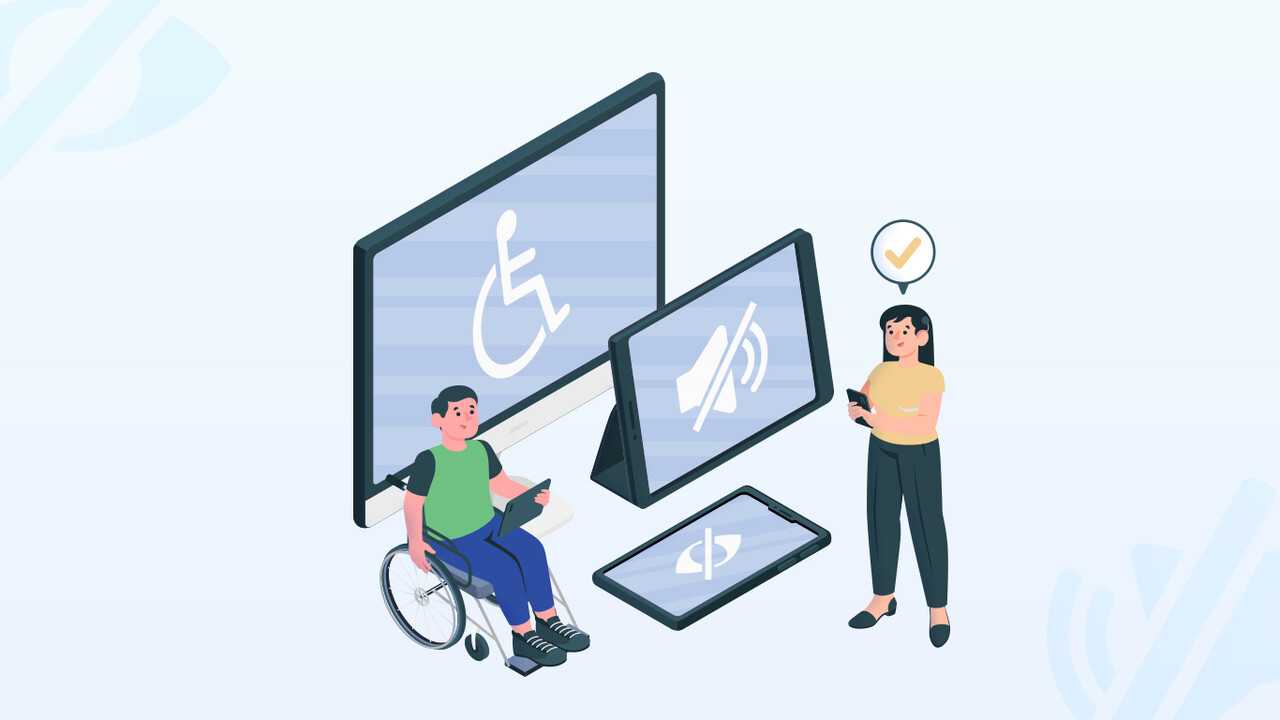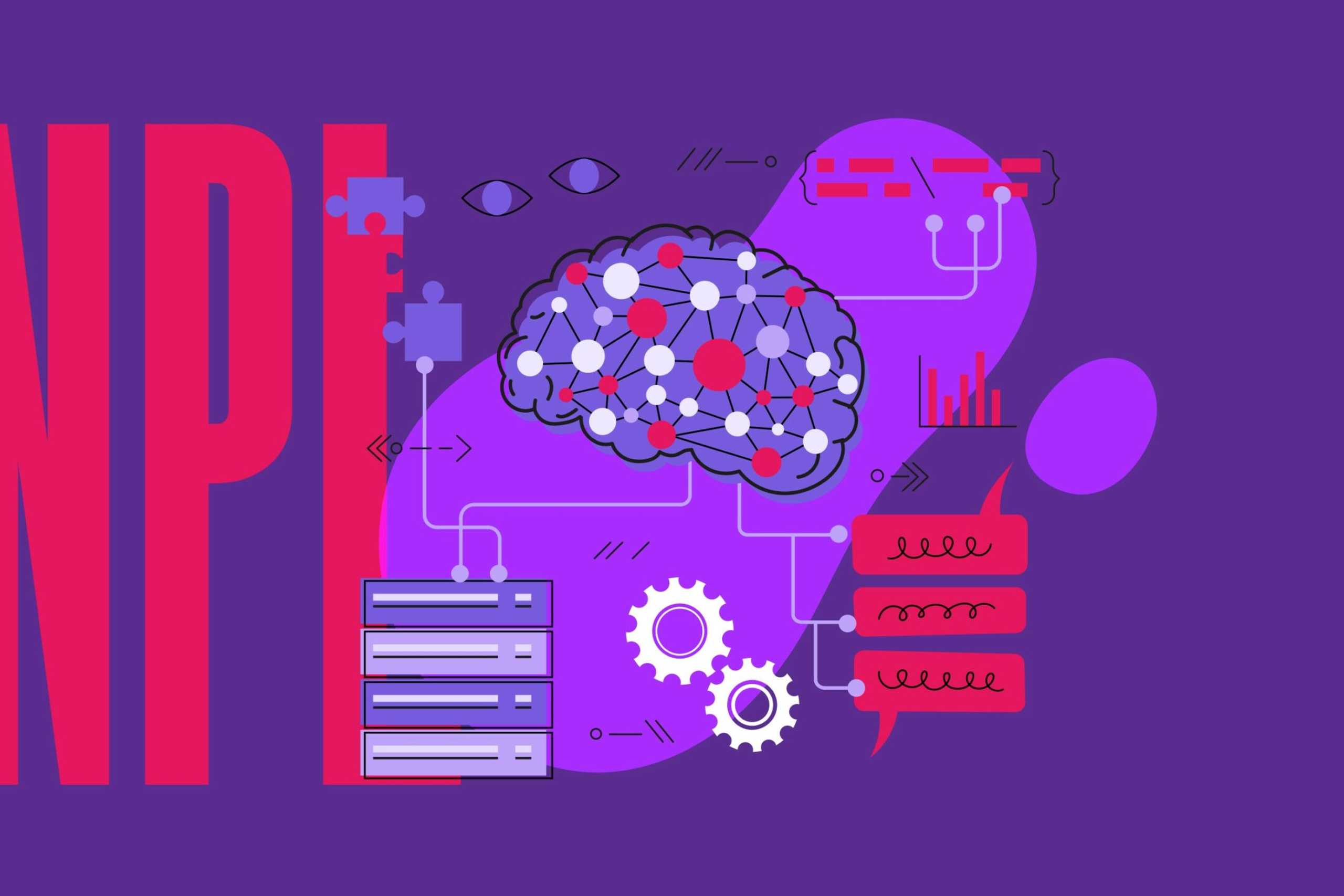
January 07, 2024
Website accessibility refers to the practice of making web content and features usable for all people, including those with disabilities. It involves designing websites and applications in a way that removes barriers that might prevent interaction or access by people with various impairments.
Web accessibility includes ensuring compatibility with assistive technologies like screen readers, providing alternative text for images, and ensuring navigability and readability for users with different abilities. The goal is to enable equal access and opportunity for individuals regardless of their physical or cognitive capabilities.
It is important to consider accessibility in all aspects of design and development to ensure that all users have equal access to information and functionality.
To understand digital accessibility, here’s a brief summary of different disabilities and their impact on accessing digital content:
- Visual Disabilities: Individuals who are blind or have low vision may struggle with non-textual digital content, complex layouts, and navigation that is not screen-reader friendly.
- Auditory Disabilities: Those who are deaf or hard of hearing face challenges with audio content lacking captions or transcripts and voice-only web interactions.
- Cognitive, Learning, and Neurological Disabilities: This category includes ADHD, autism, and learning disabilities, where users may need simplified content, structured navigation, and visual aids.
- Physical Disabilities: People with motor disabilities often require keyboard-friendly navigation, larger clickable areas, and additional time for task completion.
Designing for accessibility involves creating digital content that is easy to perceive, understand, and navigate for all users. Some key design considerations include:
- Using alt text for images to provide descriptions for users with visual impairments.
- Ensuring proper color contrast for individuals with color blindness.
- Using headers and lists to make content easier to navigate for screen reader users.
- Making sure forms are accessible by using labels and clear instructions.
Developing for accessibility involves using proper coding techniques to ensure that all users can access and interact with digital content. This includes:
- Using semantic HTML to structure and label content correctly.
- Using ARIA attributes to provide additional information for assistive technologies.
- Testing with assistive technologies to ensure that the content is accessible.
It is essential to avoid common mistakes in accessibility design and development, such as not providing alternative text for images or using images instead of text for important information. It is also crucial to regularly test for accessibility to ensure that the content remains accessible.
There are various tools and resources available to help with designing and developing for accessibility, such as screen readers, color contrast checkers, and accessibility auditing tools. These resources can aid in testing for accessibility and identifying areas for improvement. By considering accessibility in design and development, we can create a more inclusive and accessible digital world for all users.
What is Accessibility and Why is it Important?
Ensuring that everything is useable by everyone, including individuals with disabilities, is the definition of accessibility in design. It’s crucial because it provides equal access and opportunities for everybody. Businesses that prioritize this attract a wider audience and demonstrate their concern for all individuals.
Understanding Different Types of Disabilities
It’s critical to include everyone while designing and constructing, especially those with disabilities. Understanding the many types of disabilities that people experience is important. We primarily concentrate on four types: those that impair a person’s capacity for movement, hearing, vision, or thought and comprehension. We can ensure that what we develop benefits everyone by learning more about these.
1. Visual Disabilities
- Provide text alternatives for non-text content, such as images and graphs, to accommodate individuals with visual disabilities.
- Ensure proper color contrast between text and background to improve readability for all users.
- Organize content clearly using headings and lists to facilitate navigation and improve accessibility.
- Design forms that are easily accessible, allowing for seamless completion and submission.
- Consider consulting accessibility guidelines, such as WCAG 2.1, to ensure comprehensive coverage for individuals with disabilities.
2. Hearing Disabilities
- Provide captions and transcripts for videos and audio content to ensure access to information for individuals with hearing disabilities.
- Use visual alerts and vibrations to convey information for individuals with hearing impairments.
- Ensure that important audio information is also presented visually, such as in subtitles or on-screen text.
3. Motor Disabilities
- Assess specific needs: Identify the user’s motor abilities, including any disabilities, to determine the best interaction methods.
- Provide alternative inputs: Offer options such as voice commands, keyboard shortcuts, or adaptive switches to accommodate users with motor disabilities.
- Optimize control elements: Use large clickable areas, adjustable time limits, and customizable interfaces to make the website more accessible for those with motor disabilities.
- Ensure compatibility: Guarantee seamless navigation through keyboard and assistive technologies for users with motor disabilities.
4. Cognitive Disabilities
When designing a website, web design services implement accessibility steps thinking about people with cognitive disabilities. These disabilities can impact how a person remembers, solves problems, pays attention, or understands things. To help them, we should use clear, simple language, organize information in a logical way, and give enough time to complete tasks. This approach makes sure our designs are helpful and easy to use for everyone, including those who might process information differently.
How to Design for Accessibility
Creating a website or app that’s easy for everyone to use involves considering all kinds of users. This part of the process is about finding straightforward ways to make your digital content user-friendly. It includes strategies like adding text descriptions to images and designing forms that are easy for people with various abilities to navigate. Web developers implement these steps to make your digital content more inviting and accessible to a wide range of people.
1. Use Alt Text for Images
- Provide a brief, accurate, and pertinent description of images using alt text to ensure accessibility for users with visual impairments.
2. Use Proper Color Contrast
- Choose the right color combinations to ensure readability.
- Use dark text on a light background or vice versa for optimal contrast.
- Aim for a contrast ratio of at least 4.5:1 for normal text and 3:1 for large text.
- Consider color blindness by avoiding red-green combinations and relying on contrast rather than color alone.
3. Use Headers and Lists
- Properly structure your content and enhance navigation by using appropriate headers.
- Present information in a clear and organized manner by utilizing lists.
- Maintain a hierarchical structure by correctly implementing heading tags (h1-h6).
- Ensure an orderly presentation of content by using list tags (ul, ol, li).
4. Make Sure Forms are Accessible
- Ensure clear and concise labels for all form fields.
- Provide instructions and error messages in accessible formats.
- Use proper markup for form elements, such as <label> and <input>.
- Enable keyboard navigation and focus indicators for all interactive elements.
- Implement logical tab orders to ensure accessibility for keyboard users.
How to Develop for Accessibility
In today’s digital world, it is crucial for designers and developers to prioritize accessibility in their work. By making websites and applications accessible to all users, we can create a more inclusive and equitable online experience. In this section, we will discuss three key ways to develop for accessibility: using semantic HTML, implementing ARIA attributes, and testing with assistive technologies. These web accessibility strategies will help ensure that your digital creations are accessible and usable for everyone.
1. Use Semantic HTML
Use semantic HTML elements like <header>, <nav>, <main>, <section>, <article>, <aside>, <footer> to provide meaning to the content.
- Structure your HTML in a logical and organized manner, using elements like <h1> to <h6> for headings and <p> for paragraphs.
- Utilize lists effectively with <ul> for unordered lists and <ol> for ordered lists, ensuring clarity and structure.
- Employ appropriate HTML tags such as <label> for form labels and <input> with associated <label> for input fields.
2. Use ARIA Attributes
- Define landmarks using ARIA landmarks to help users navigate the page.
- Indicate changes in content with ARIA live regions for screen readers.
- Improve keyboard navigation using ARIA roles to define interactive elements.
- Ensure proper focus management using ARIA attributes like aria-activedescendant.
3. Test with Assistive Technologies
- Conduct automated tests using screen reader software like VoiceOver for iOS or TalkBack for Android to ensure content is accessible.
- Engage users with disabilities to navigate through the interface and provide feedback on accessibility barriers.
- Verify keyboard navigation and functionality to accommodate users who rely on keyboard input instead of a mouse.
- Utilize color contrast analyzers to guarantee sufficient differentiation for users with visual impairments.
Common Mistakes to Avoid in Accessibility Design and Development
- Ignoring alternative text for images and non-text content.
- Not providing proper heading structure and skipping heading levels.
- Using color as the only way to convey information.
- Implementing inaccessible form elements and controls.
- Forgetting to test with assistive technologies and real users.
Tools and Resources for Accessibility
As designers and developers, it is our responsibility to create digital experiences that are accessible to all users, regardless of their abilities. This section will provide a comprehensive overview of the essential tools and resources for accessibility.
We will discuss the use of screen readers for individuals with visual impairments, color contrast checkers for ensuring readability, and accessibility auditing tools for testing and improving overall accessibility. These tools are crucial in creating inclusive and user-friendly designs.
1. Screen Readers
- Ensure images have descriptive alt text.
- Use proper heading structure for easy navigation.
- Optimize form fields for compatibility with screen readers.
Pro-tip: Regularly test your website with screen readers to identify and address accessibility barriers.
2. Color Contrast Checkers
- Select a reliable color contrast checker tool, such as WebAIM’s Contrast Checker or the Accessible Colors tool from Color Safe.
- Input the foreground and background color codes or use the color picker to test various color combinations.
- Make sure that the color contrast ratio meets accessibility standards, such as a minimum ratio of 4.5:1 for normal text and 3:1 for large text.
- Double-check the color contrast for important elements, including buttons, links, and form fields.
- Consistently use the color contrast checker throughout the design and development process to ensure accessibility compliance is maintained.
3. Accessibility Auditing Tools
- Use automated tools like Axe, WAVE, or Lighthouse to scan web content for accessibility issues.
- Conduct manual audits to verify the findings of automated tools and identify additional accessibility barriers.
- Engage users with disabilities to test the website or app using screen readers, keyboard navigation, and other assistive technologies.
- Implement a continuous monitoring process to ensure ongoing accessibility compliance.
When utilizing accessibility auditing tools, be sure to combine automated scans with manual checks and user testing to ensure comprehensive accessibility for all users.
Frequently Asked Questions
1) What is the importance of designing and developing for all users?
Designing and developing for all users is crucial because it ensures that your content is accessible to everyone, regardless of their abilities. This not only makes it easier for users to access your content, but it also promotes diversity and inclusion. Additionally, by catering to users with varying abilities, you can positively impact their lives and create a more enjoyable user experience for all.
2) How can content creators make their content accessible for all users?
Content creators can make their content accessible by incorporating accessibility tools and features, such as screen magnifiers and closed captions for videos. They can also use descriptive alt text for images and ensure that their website and social media platforms are optimized for web accessibility.
3) What are the main accessibility issues that developers should be aware of?
Developers should be aware of difficulty lifting/grasping, cognitive/mental/emotional impairment, vision impairment, and hearing impairment. These issues can affect the ability of individuals to use websites and digital content, and it is important for developers to consider them in their design and development process.
Key Takeaways:
Ensuring that everyone can use and access digital platforms is critical. Beyond simply adhering to guidelines, it’s about creating a more inclusive digital environment. By understanding and considering various disabilities.
We can develop solutions that not only reach a broader audience but also enhance the overall usability and experience for users. This inclusive approach is fundamental in making technology accessible and beneficial for all.
Author Bio
Palak
She is a quality content writer for WordPress, technologies, and small businesses working at WPWeb Infotech – Web Development Company. She is an incredible team player and works closely with the team to achieve great results. She watches Netflix and reads Non-fiction, self-help, and autobiographies of great personalities.
Contact us
Swan Buildings (1st floor)20 Swan StreetManchester, M4 5JW+441612400603community@developernation.net


